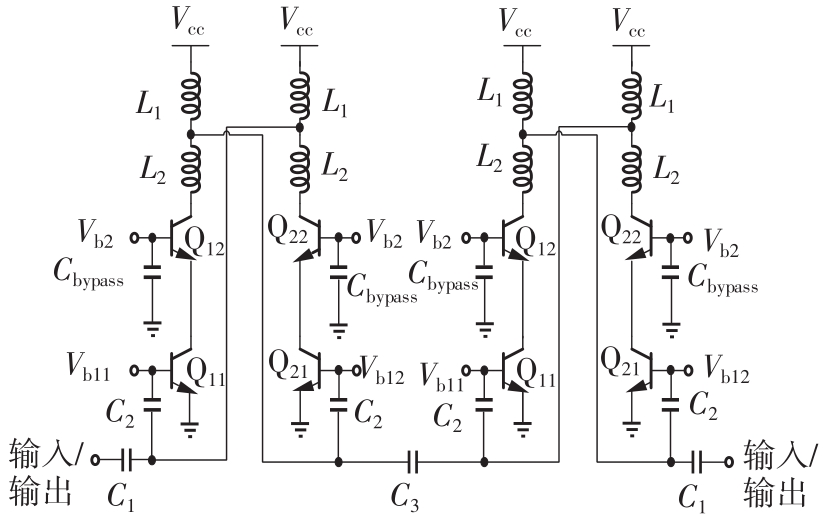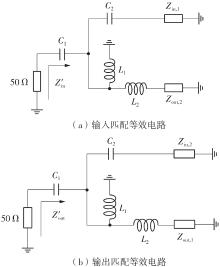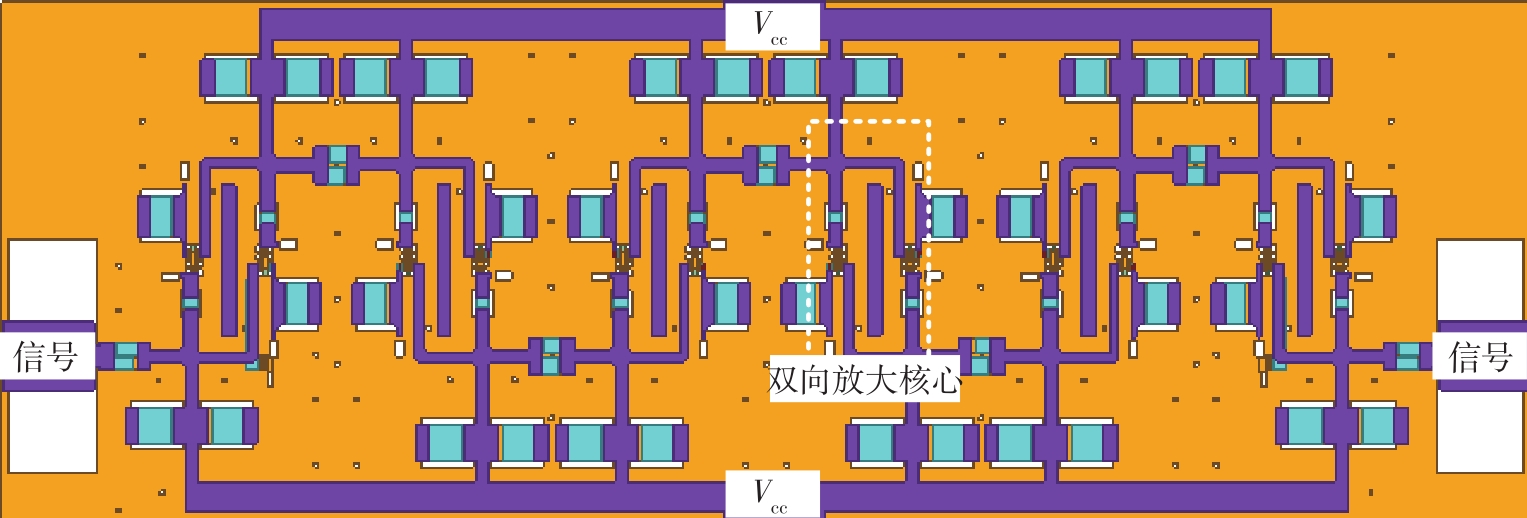华南理工大学学报(自然科学版) ›› 2022, Vol. 50 ›› Issue (12): 124-131.doi: 10.12141/j.issn.1000-565X.220143
所属专题: 2022年电子、通信与自动控制
基于SiGe工艺的207~215 GHz工作带宽的紧凑型双向放大器
孟凡易 刘芷蘅 王毓 刘浩 马凯学
- 天津大学 微电子学院,天津 300072
A Compact Bidirectional Amplifier with 207~215 GHz Operating Bandwidth Based on SiGe Process
MENG Fanyi LIU Zhiheng WANG Yu LIU Hao MA Kaixue
- School of Microelectronic,Tianjin University,Tianjin 300072,China
摘要:
对称型双向放大器的接收、发射模式采用相同的放大核心,能够降低匹配网络结构的复杂度,减小芯片面积。为进一步降低对称型双向放大器芯片的面积,文中提出了一种融合不同工作状态下晶体管寄生参数的双向匹配技术,探明了在不同偏置状态下硅基晶体管的节点阻抗变化与匹配电路阻抗的映射关系;基于德国IHP微电子研究所0.13 μm SiGe BiCMOS工艺,采用该匹配技术,设计了一款207~215 GHz高增益、无开关式对称型双向放大器,该放大器通过对电路偏置的切换来实现消除通信系统中单刀双掷开关的目的。文中通过对芯片版图的镜像对称性进行优化来保证该双向放大器正向和反向性能的一致。全波电磁仿真和电路仿真结果表明:在工作频段内该双向放大器每个通道的最大增益为28.6 dB,最小噪声系数为16 dB,双向匹配网络的输入、输出反射系数S11和S22的最小值分别为-13.6 dB、-15.5 dB,芯片功耗为63 mW,核心面积仅为0.17 mm2,说明该双向匹配网络在节省芯片面积的同时,能够实现优良的输入输出和噪声匹配效果;文中设计的无开关式硅基双向放大器可实现200 GHz以上的工作频率,具有高增益和面积紧凑的特点。该双向放大器极大地缩小了芯片面积,降低了射频前端成本,可应用于太赫兹微系统。
中图分类号:

























